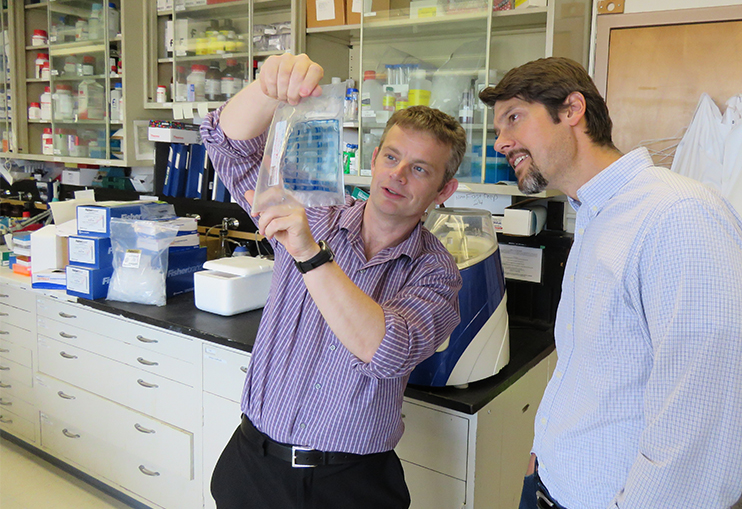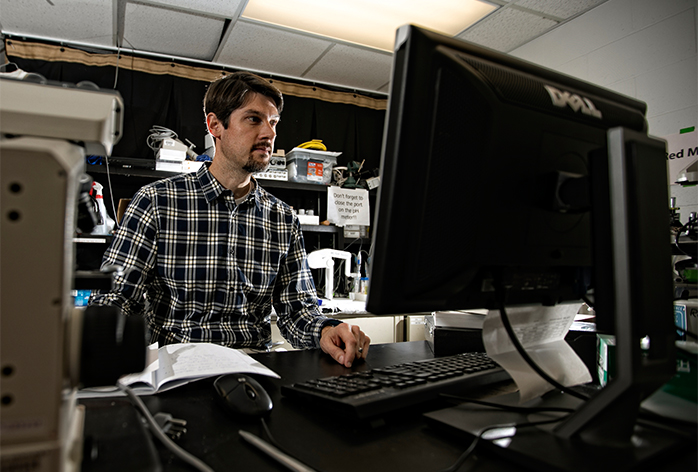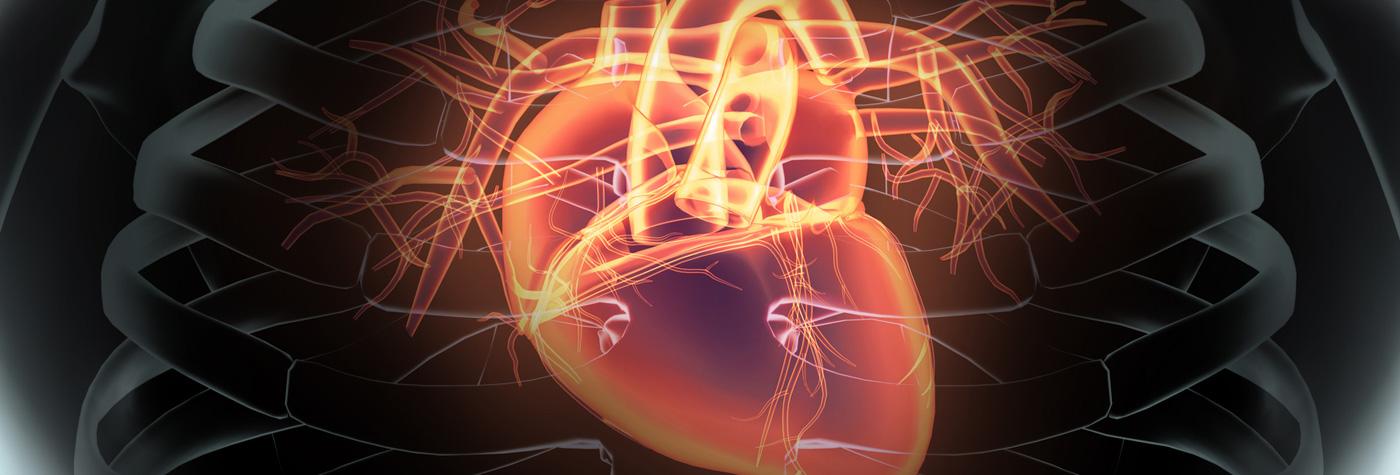Virtual Heart Could Lead to Better Long-Term Outcomes
Picture this: You’re battling heart failure and meeting with your doctor to discuss treatment. Before prescribing anything, the doctor pulls up a virtual model of your heart on her computer and “treats” it with several of the possible treatments. A few moments later, she can see how your heart would be doing five years down the road and compare those results for each treatment.
 Your doctor chooses the treatment with the best long-term outcome, and you live a longer and healthier life.
Your doctor chooses the treatment with the best long-term outcome, and you live a longer and healthier life.
Two University of Kentucky researchers are working to make this experience a reality for the 5.7 million adults in the U.S. with heart failure.
Combining physiology and engineering, UK’s Jonathan Wenk and Kenneth Campbell are developing computer software to deliver better therapies for patients with life-threatening heart failure. The National Institutes of Health recently awarded the team a $3 million five-year grant to create a computer model of the heart that can be customized to individual patients and predict long-term results.
“This model will have tremendous predictive power, meaning it will change and adapt in response to treatment or disease,” says Wenk, an associate professor of mechanical engineering and Gill Professor in Engineering. “For doctors, this is another tool that could guide them in their decision process.”
The computer model would take MRI or genetic data of a patient and build a multi-scale simulation of his or her heart, leading to more personalized treatment plans. The model could also serve as a screening tool for scientists and drug companies that are trying to develop new therapies.
 “If you gave a patient a drug, how would their heart beat in the next second? Folks are pretty good at predicting that, but we’re trying to predict how their heart will grow over months and years after taking a pill or having a genetic mutation,” explains Campbell, associate professor of physiology and cardiovascular medicine.
“If you gave a patient a drug, how would their heart beat in the next second? Folks are pretty good at predicting that, but we’re trying to predict how their heart will grow over months and years after taking a pill or having a genetic mutation,” explains Campbell, associate professor of physiology and cardiovascular medicine.
Only a handful of teams in the world are working in this area, and few are as collaborative as this one. With Wenk’s engineering skills and proficiency in organ-level function and Campbell’s expertise in medicine and molecular-level function, they are among the first – if not the first – to incorporate the effects of genetic mutations into a model of the heart.
The computer technique is virtually the same used for classic engineering applications, such as simulating a bridge or a car crash.
“Whether it’s a heart or a piece of steel, as long as we understand their governing equations, we can harness them to develop a better design,” Wenk says.
 The team, which includes collaborators at Michigan State University and Pennsylvania State University, will specifically aim to better understand familial hypertrophic cardiomyopathy, a genetic mutation and the most frequently inherited heart defect, which affects about 700,000 Americans.
The team, which includes collaborators at Michigan State University and Pennsylvania State University, will specifically aim to better understand familial hypertrophic cardiomyopathy, a genetic mutation and the most frequently inherited heart defect, which affects about 700,000 Americans.
Wenk – in addition to working with physiologists and biophysicists – is the only engineering faculty member to hold a joint appointment in UK’s Department of Surgery, where he applies engineering concepts to surgical approaches.
With this project and others, the researchers are aiming to develop a top-tier computational cardiology team at UK. If computers can be used to model better bridges, they can also be used to model healthier hearts. This article has been adapted from the full news release issued by UKPR.
Learn more about our Heart Failure ProgramSee more stories from 2018 State of the Heart

